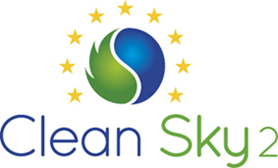The high-level objective of GLOWOPT is the development and validation of Climate Functions for Aircraft Design (CFAD) with respect to minimizing global warming and their application to the multidisciplinary design optimization of next-generation aircraft for relevant market segments.
The following objectives are defined to reach that target:
To provide an overview of the state of the art on the scientific background of the relation between aircraft design and operation and its climate impact
To derive characteristic aircraft design requirements, primarily payload and range, based on statistical data analysis of the worldwide aircraft fleet and route structure for future entries into service
To develop climate cost functions for the use in the aircraft design optimisation, which reliably represent the climate impact of CO2, NOx, H2O emissions, as well as contrail-cirrus effects
To perform a Multidisciplinary Design Optimization with respect to the climate cost function to find a set of operational parameters, design parameters and aircraft technologies that minimize the climate impact of the aircraft design
To perform an assessment of the aircraft designs chosen in order to quantify their impact on important metrics such as landing and take-off noise, emissions and cash operating cost.
Impact of GLOWOPT

The Clean Sky 2 programme has been set up to
- accelerate the progress towards the ACARE SRIA goals for 2020-2050;
- enable a technological leap in the face of emerging competitors;
- justify the early replacement of aircraft that have yet to enter service and accelerate the adoption of new technology into the global fleet.
The Clean Sky 2 high-level environmental objectives are
(b) to contribute to improving the environmental impact of aeronautical technologies, including those relating to small aviation, as well as to developing a strong and globally competitive aeronautical industry and supply chain in Europe. This can be realised through speeding up the development of cleaner air transport technologies for earliest possible deployment, and in particular the integration, demonstration and validation of technologies capable of:
(i) increasing aircraft fuel efficiency, thus reducing CO2 emissions by 20 to 30 % compared to ‘stateof-the-art’ aircraft entering into service as from 2014;
(ii) reducing aircraft NOx and noise emissions by 20 to 30 % compared to ‘state-of-the-art’ aircraft entering into service as from 2014.”
Clean Sky 2 aims to accelerate the introduction of new technology in the 2025-2035 timeframe. It is assumed that by 2050, 75% of the world’s fleet now in service (or on order) will be replaced by aircraft that can deploy Clean Sky 2 technologies.
It is therefore of special importance that aircraft manufacturers are provided a technique as early as possible, which allows for the consideration of the aircraft’s fleet level climate impact at design stage, to make sure that next-generation aircraft will have a considerably smaller impact on global warming.